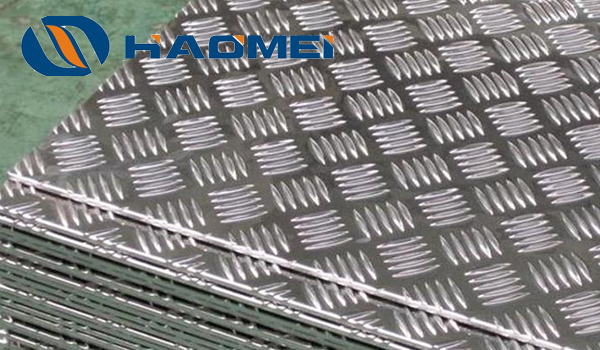The aluminium chequer plate thickness differs from regular aluminium plate thickness in that it covers both base plate thickness and pattern height. The most frequently applied is five bar aluminum plate, between 1mm and 6mm thick, and 1200mm*2400mm wide. While regular aluminum plates can be as thick as 500mm if you need. The aluminium checker plate thickness is up to its application. In most cases the plate is used for tread panels and decoration panels, which require little about thickness. That’s why most alu chequer plates are only around 2mm thick. Some plates for special usages, like flooring in marine building, are thicker, but 6mm is usually sufficient.

Common alloys for aluminium checker plates include 1100, 1050, 1145, 1060, 1070, 2a12, 3003, 3A21, 3004, 5a05, 5052, 5083, 6a02, 6061, 6063, 7a04, 7075 and 8011. Tempers are O, H12, H14, H16, H18, H22, H24, H26, H28, H32, H34, H36, T351, H112, T651, T7451, H111, H116, HX1-HX9, T4, T6 etc.
The measurement method of aluminium chequer plate thickness is as follows:
1. Use micrometer to directly measure the place without pattern. (specification thickness is the thickness of flat plate without pattern).
2. Measure around the pattern board several times.
3. Find the average of several numbers, which is the aluminium tread plate thickness.